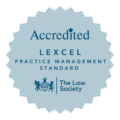Kathryn Fielder, employment senior associate, B P Collins, advises employers on what they should be aware of.
It is now 26 years since the introduction of the Disability Discrimination Act 1995 (DDA), subsequently incorporated into the Equality Act 2010 (EqA 2010). It was introduced to provide similar levels of protection for the disabled as had been previously provided for gender and ethnicity under the Sex Discrimination Act and Race Relations Act. It also introduced the concept of ‘reasonable adjustments’ in employment, by imposing an obligation on employers to make adjustments in an attempt to level the playing field in the workplace.
Among the many issues thrown up by the COVID pandemic are questions relating to how employers should treat those employees affected by it, not least the long-term consequences around so-called ‘long COVID’, its medical impact and whether it is likely to be classified as a disability under EqA 2010.
Prevalence of long COVID
For some, the symptoms of COVID continue for months after their initial illness, leading to issues with their return to work. People who do go on to experience long-term symptoms, the effects can be debilitating, and, according to the ONS, 1.3m people in the UK self-reported as having long COVID in December 2021.
Figures also suggest that long COVID has a higher prevalence among those of working age – 35 to 69 years old – and it affects women more than men. If long COVID is classified as a disability for the purposes of EqA 2010, this raises serious issues surrounding employers’ obligations generally and especially their considerations in making reasonable adjustments. As ever, there is a balancing act between the investment of time and costs, versus the risk of potential claims. While it is too early to accurately predict this risk or its cost at this stage, generally prevention is better than a cure.
Defining disability under the EqA 2010
Disability under the EqA 2010 is defined as a ‘physical or mental impairment’ that has a ‘substantial’ and ‘long-term’ negative effect on your ability to do normal daily activities.
It is easy to see therefore how the symptoms of long COVID are likely to be classified as a physical impairment. Those symptoms can include excessive fatigue, insomnia, muscle pain, heart and lung damage, shortness of breath, headaches, loss of taste and smell, intermittent fevers and inability to concentrate. Other symptoms include cognitive issues such as ‘brain fog’, hearing impairment and mental health problems.
The next key question around its classification as a legal disability would be whether the negative effect is ‘substantial’ and ‘long term’.
‘Substantial’ is determined on a case-by-case basis, but has to be ‘more than minor or trivial’. There are serious physical symptoms caused by long COVID, which could lead to time off and therefore trigger issues for the employer. Equally a mental health condition, or problems with memory or concentration, could also be regarded as substantial.
‘Long-term’ means it has lasted or is likely to last for at least 12 months or more, and there are signs that long COVID can last this long. An impairment is also considered to be long term if the effects are recurring or fluctuating. However we must remember that long COVID affects people in different ways,so not everyone with long COVID will count as having a disability.
If individuals with long COVID are ultimately classified as disabled under EqA 2010, they will have extra protection against dismissal. If employers treat their employees in a discriminatory way, and don’t make reasonable adjustments, they will risk claims for discrimination further down the line.
If you’d like to discuss the matters raised in this article, or other employment issues, please contact Kathryn Fielder, senior associate, B P Collins at kathryn.fielder@bpcollins.co.uk or call 01753889995.
Top tips for employers
- Get a medical assessment for your employee to confirm the diagnosis. This may give you an indication of how long the ailments could last and provide a clearer picture to make reasonable adjustments to support their return to work.
- In the meantime, the business needs to continue, so look into sharing their workload or bring in temporary cover in the first instance.
- This is a complex area of employment law and every case is different, so seek expert advice to ensure you have the correct procedures in place.
- Good staff are vital to every business so try to think long term and work out how to retain them.
- Don’t rush into a knee jerk rection leading to dismissal. Otherwise, you could soon face a very costly tribunal claim.
















